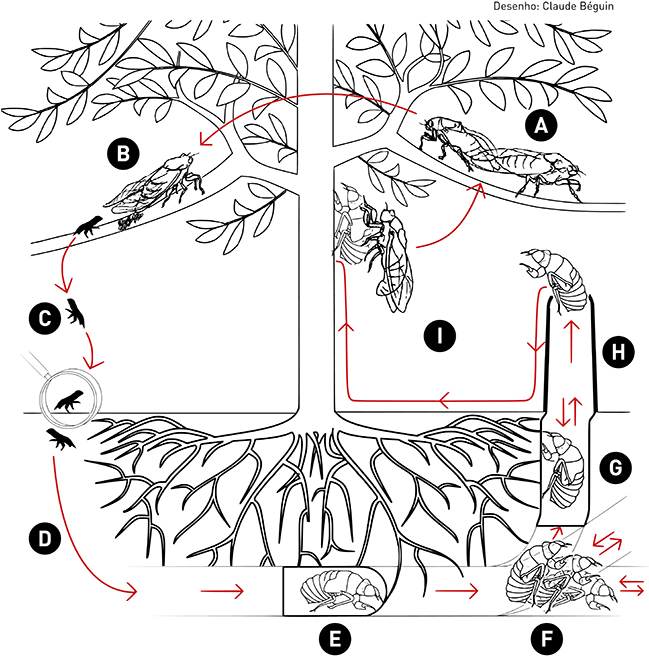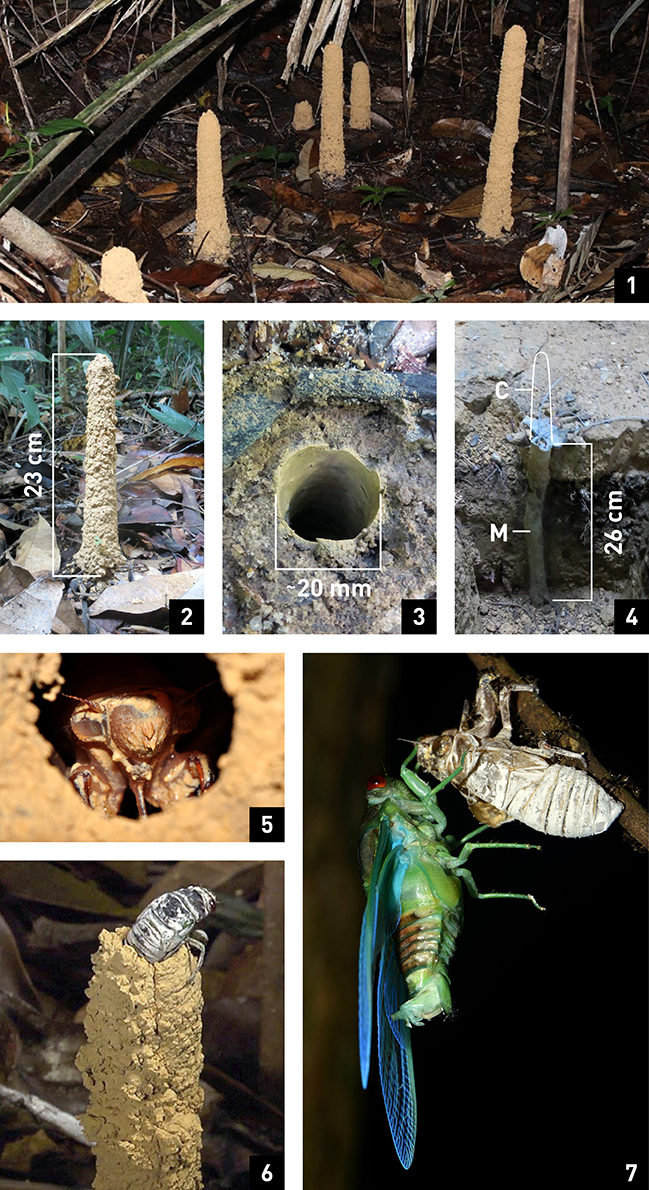Cicadas
Cicadas are insects from the Cicadidae family. The chimney-building cicadas at Musa belong to the Guyalna chlorogena (Walker) species.
Life cycle

A During their brief life, adult cicadas mate, stimulated by the courtship calls
of the males.
B Before they die, the females deposit their eggs on tree branches.
C A miniscule larva (2 mm) comes out of the egg, drops to the floor, and burrows.
D The larvae live underground for several years, molting a number of times, until they become nymphs almost the size of adult cicadas. They feed on the sap found in the tips of tree roots (meristems).
E Using their front legs, they excavate the soil, pushing it backwards. A nymph moves forward in a tunnel it opens ahead of it and close behind it. It sucks the sap of tree roots using its pointy and hard mouthpiece like a syringe, while digging its feeding tunnel at the same time.
F At some point, while moving forward and backwards, the nymph changes direction and starts moving obliquely and then vertically.
G Working from the bottom up, the nymph excavates a vertical well that can be up to one meter deep, the same way it digs the horizontal tunnel, by pushing the soil backwards; that is why the bottom of the well is closed.
H The nymph builds a 15 to 40 cm tall chimney (photos 1 and 2) that is a continuation of the well (photos 3 and 4), raising the top part without ever opening or puncturing it. Building occurs at night between December and March. The chimney grows quickly (3-4 cm per night). During the six to eight months they stay inside the building, the nymphs are very active: they open and close the top in certain instances, repair the tower if damaged, and rebuild whenever necessary.
I Finally, between July and September, the nymph opens the top of the tower (photo 5) before leaving a few hours later (photo 6) to undergo metamorphosis (photo 7).

[4] Cement mold (M) of an 88 cm deep well (26 cm excavation) with the location of the chimney (C) •
[5] Opening of the chimney top • [6] Exit of the nymph • [7] Metamorphosis
Photo 1: César Fernandes • Photos 2, 3 and 4: Claude Béguin • Photos 5, 6 and 7: Vanessa Gama
